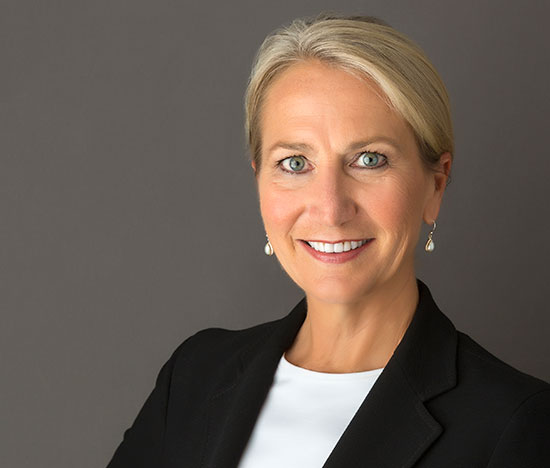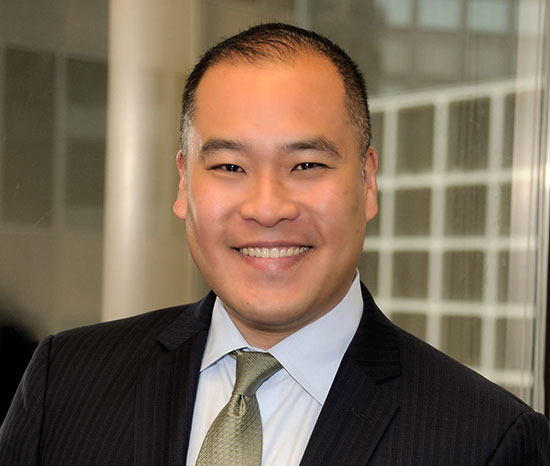
“Changes aren’t permanent, but change is.” – Rush
The gales of change continue to buffet the legal profession in this increasingly digitalized post-Great Recession era. Attorneys and law firms must gallop to keep pace with the latest in areas such as business development, meeting client needs, talent recruitment, succession planning, and technology and cybersecurity.
Firms tend to respond to benchmarking data about what their peers have and haven’t done, but that’s inside-the-box thinking, says John Remsen Jr., founder of The Remsen Group, a law firm management consultancy in Atlanta and president and CEO of the Managing Partner Forum.
“I almost guarantee they will ask, ‘Who else is doing that?’ ” he says. “There is no reason you can’t lead. You don’t always have to follow the example of others. Don’t take crazy risks, but look at what other firms are doing in other markets, or what banks and other professionals are doing. … Get out of your box.”
Midsized and smaller law firms, which predominate in Wisconsin, can certainly compete with bigger firms, Remsen believes, through creativity and innovation. “They can provide as good if not better service,” he says. “In many cases they can run circles around bigger firms. Smaller firms can seize these trends, but they must look forward and not backward and tune into clients and what they’re looking for.”
In this article, national legal industry experts highlight legal practice trends and comment on how Wisconsin lawyers can seize on opportunities, self-assess, and determine where to put their time and energy to build momentum in 2019.

Law firms should engage in niche marketing and take into account local industries, such as agribusiness in northern Wisconsin. “Clients are more … interested in people who have an understanding of their business and industry, even more so than the law.” – Sally Schmidt, Schmidt Marketing, Inc., Edina, Minn.
Marketing and Business Development
To be successful, firms need a vision and strategy for the future, Remsen says. “Even if you’re a sole practitioner, look out five years. What’s in your crystal ball?” he says. “Keep it really simple; distill your practice into maybe four areas.”
What's Hot, What's Not in Wisconsin
See “What’s Hot, What’s Not: Wisconsin Practice Trends 2019” for a local perspective on these practice trends.
Sally Schmidt, president of Schmidt Marketing Inc., Edina, Minn., says that law firms should engage in niche marketing and take into account local industries, such as agribusiness in northern Wisconsin. “Clients are more and more interested in people who have an understanding of their business and industry, even more so than the law,” she says. “You don’t have to narrow your practice. But talk about estate planning for family businesses, or employment work for colleges and universities.”
Lawyers can grow their practices “enormously” by participating in industry groups, Schmidt says, especially if they can demonstrate thought leadership. “People looking for professional service providers do 60 percent of their research without having talked to anybody,” she says. “They’re looking online. They’re looking for evidence of expertise. If you write, publish, put something on social media, get it out there. That, to me, is incredibly effective.”
Law firms should also embrace technology, such as video platforms, in the marketing realm, says Rochelle Washington, senior staff attorney and practice management adviser for the District of Columbia Bar’s Practice Management Advisory Service. “Lawyers should be using [video] for promotional endeavors – such as YouTube videos with basic how-to information, not legal advice,” she says. “You can answer basic questions, like, ‘What are the requirements for divorce in Wisconsin?’”
Top Tips for 2019
National legal industry experts recap their top tips for where to put your time and energy in 2019.
On Law Firm Leadership: John Remsen, The Remsen Group
-
Build a clear vision. This includes practice mix, client mix, desired size and growth path, and targeted geography. “Put it in writing and share it with everybody,” he says. “Let everybody in your firm know what your vision is, so they can get excited with you.”
-
Look forward, not backward. Take the long-term perspective and devote enough nonbillable hours to do so because nonbillable hours determine your future. “About 10 percent of collective lawyer time should be invested in marketing, visiting clients, joining organizations, and training and developing young lawyers,” he says.
-
Have some courage. “Don’t be afraid to step out of the mold and do something different,” Remsen says. “Have the courage to fail. Lawyers are petrified – they hate change, they hate risk. You need to try something new.”
On Cybersecurity: Sharon Nelson & John Simek, Sensei Enterprises
-
Multi-factor authentication. Protect your cyber resources by requiring at least two pieces of evidence that you are the authorized user.
-
Encryption. Have it available and use it anytime you are transmitting sensitive client data.
-
Password managers. These are secure sites that assign complicated passwords whenever they’re needed, so the user only needs to remember the password to the password manager. “Passwords aren’t going to go away in the foreseeable future,” he says. “We’ve got to stop using the same passwords for everything. It’s not expensive. I don’t care who you are, use one.”
On Security, Marketing, and Outsourcing: Rochelle Washington, District of Columbia Bar Association
-
Use a secure client portal for communications. That way, “I don’t need to find out the best encryption software for my email,” she says. “I just need to make sure the service provider is reputable, that they are, in fact, encrypting information, and that I will still have access to that information once I am no longer paying the subscription fee.”
-
Incorporate video for client communications and marketing. Informational videos on YouTube can help market your practice as long as they don’t cross the line into giving legal advice.
-
Consider outsourcing. Smaller firms are using contract administrative assistants, paralegals, and even attorneys to help manage the ups and downs of workflow.
On Recruiting Legal Talent: Ryan Whitacre, Major, Lindsay & Africa
-
Lawyers: Think broadly about your careers. Seek out business development and leadership training – even at an early stage – and continue to hone such skills as you progress in seniority.
-
Firms: Expand judiciously. This means exploring the lateral partner market but with a commitment to integrate any newcomers. And integration should be recognized as a years-long process to fully assimilate such partners or groups, so they can effectively cross-sell their new firm.
-
Corporate law departments: Exercise your buying power. This will enable you to seek greater efficiency and diversity from outside firms. Corporate departments also should continuously run calculations as to whether there is more value to bringing such services in house with either a full-time or part-time hire.
On Client Development and Marketing: Sally Schmidt, Schmidt Marketing Inc.
-
Find a system to organize contacts and activities. If you write things down, they tend to get done – instead of responding to somebody asking you to write an article, or go to lunch, make your own plan: who do you want to reach out to this year? Create a “tickle file” on LinkedIn or in a notebook, and spend time organizing priorities.
-
Target a few niches. For example, if there are craft breweries in your area, write an article for the local brewers’ guild newsletter on startup issues for new breweries, or go to an area brewers’ conference, send in a proposal to speak at an association, or take a few people to lunch.
-
Always visit your best clients. This is a must for your to-do list.
On Client Satisfaction: George Psiharis, Clio
-
Map your client’s journey. Figure out how you want a client to make the journey through working with your firm, from initial inquiry to settling or closing the case or matter.
-
Figure out which piece of the market to pursue. And consider whether your client experience works well for the type of person you are trying to get through the door.
-
Determine how to deliver relief, rather than frustration. That distinction is a key driver of both repeat business and referrals.
Attracting and Retaining Clients
To attract and retain clients, firms should consider alternative billing arrangements, especially on the consumer side. Remsen says about 20 percent of firms nationally have reported doing so, a number that hasn’t changed much in recent years. “The billable hour is still king,” he says. “That’s not what clients want. They want faster, better, cheaper – which flies in the face of the billable hour. What’s your compensation system doing to incentivize process improvement?” Three-quarters of firms say they haven’t even thought about process improvement, he adds.
By the Numbers: Key Business Trends
George Psiharis, chief operating officer for Clio, shares nuggets from the company’s 2018 Legal Trends Report. Jump to the sidebar below.
Firms also need to be strategic about whether and when to grow, Remsen says. “If so, in what areas? What clients are we going after?” he says. And at a certain point of growth, firms need to decide if it makes sense for them to expand their geographic footprint beyond one city into branch offices or stay local, he adds.
As firms grow, they also need to ensure that internal communication remains paramount so different attorneys and, as they evolve, practice groups play off one another’s strengths, Remsen says. “Do we share and communicate, or do we each do our own thing?” he says. “The degree to which we work toward a shared vision, we will achieve far more.” That means a meaningful committee structure and a strong, clear governance structure that lays out what’s decided by the managing partner, executive committee, or full partnerships. “A lot of firms get bogged down with too many cooks in the kitchen,” he adds.
Law firms also should implement a formal client-feedback loop, Schmidt says. “If you’re a banking lawyer, every 10th loan send out something that says, ‘How are we doing?’ If you’re a business lawyer, sit with your clients once a year and ask, ‘How did it go this year?’ You need to have conversations where clients have an opportunity to tell you if they’re not happy,” she says. “Otherwise, they will tell all kinds of other people while they slowly wean their files away.”
Thoroughly explain the need for any rate increases – an automatic raise with a pro forma letter doesn’t cut it anymore, Schmidt says. “Clients want to have a conversation,” she says. “They may already have prepared their budget for 2019 back in October.” And clients are savvier about law firms’ costs and overhead than they once were. “They can peel back the curtain,” she adds.

“On the corporate legal department side, it’s a job seeker’s market. The past decade has seen the rise of legal operations as a stand-alone profession.” – Ryan Whitacre, Major, Lindsay & Africa, Chicago
Attracting Talent
Law firms should adjust to new realities on the human resources front, as well. To attract younger lawyers to the practice, for example, firms should take into account, however reluctantly, the desire of millennials for a greater sense of work-life balance, Remsen says. “They want feedback, evaluation, and a path to partnership,” he says. “They also want technology and flexibility to work at home. Are you evolving to that? It’s not that they want to work less, they want to work differently.” And millennials have a reasonable point, Remsen says. “It’s time to evolve, and adapt.”
The “Bright Insight” study from Cushman & Wakefield shows that work-life balance is among the top desires of younger attorneys, although compensation is not far behind. The Cushman & Wakefield survey also suggests that moving toward greater diversity of attorneys and staff is high in importance, in part because some clients are demanding it for their matters, Remsen says, and also because diversity and inclusion promote a positive law firm culture.
Women, for instance, might like to go where they can be mentored by other women, says legal recruiter Ryan Whitacre, managing director at Major, Lindsey & Africa’s Midwest office in Chicago. And he echoes Remsen in noting that there are also generational divides.
“People like to bash millennials, but we need to realize that millennials are here, they’re in their 30s, they want flexibility, they don’t necessarily want to work 9 to 5. Employers need to recognize that, or they won’t attract talent.”

“The billable hour is still king, but that’s not what clients want.” – John Remsen, The Remsen Group, Atlanta
Corporate Legal Departments
On the corporate legal department side, it’s a job seeker’s market, says Whitacre. “It’s a state of affairs we’ve not seen in some time,” he says. “But here’s what’s been very interesting: We’ve seen counteroffers and people taking different opportunities not just for the money. Specifically, one candidate declined our clients’ offer and took a competing one, and told us, flat out, they went to the other firm because ‘they listened to me in the interview.’”
Corporate legal departments suffered during and shortly after the Great Recession but have done very well over the past several years, Whitacre says. “We’re all waiting for a correction,” he says, and in the Midwest and Wisconsin, specifically, that fear seems likely to stem from tariffs and trade protectionism.
The past decade has seen the rise of legal operations as a stand-alone profession, Whitacre says. “It’s all the nonpractice aspects, from finance and budget, to contract management, e-discovery, records and information, outside counsel, and vendor management,” he says. “None of that has anything to do with going to law school. That’s just running a first-class function.”
During the Great Recession, general counsel began to question outside counsel more specifically about what they were spending money on. They developed a new expectation that outside counsel would come up with budgets and stick to them, Whitacre says. “They’re running major RFPs on outside counsel. They are asking for and getting big fee proposals, or alternative fee arrangements, and it’s become a fact of life,” he says. “Your law firms have to adjust, or they’re not going to get the business.”
What Not to do in 2019
Our experts have these recommendations for practices to avoid and habits to break in 2019.
-
Doing things the way they’ve always been done, or the way everybody else does them, with regard to law firm management, technology, personnel, and client relationships.
-
Unclear management decision-making with “too many cooks in the kitchen.”
-
Sticking stubbornly to the billable hour when clients clearly want an alternative arrangement.
-
Instituting automatic rate increases for clients without an explanation.
-
Lack of transparency in budgeting that leaves clients wondering what they’re paying for.
-
Assuming that clients will want to communicate via phone or email rather than in person.
-
Imposing inflexible schedules, especially for younger lawyers and even more especially for those who are parents.
-
Expecting everyone to stay on the same track to partnership.
-
Constantly “feeding” business to newer lawyers without providing them with their own business development skills.
-
Allowing overly independent individual marketing with no attention paid to firm brand or potential conflicts of interest.
-
Using on-site physical servers and software that has not been updated with the latest cybersecurity.
-
Using free public Wi-Fi for client-related matters.
Succession Planning
Succession planning is another challenge facing law firms, particularly when middle-aged attorneys who would be the next to step up haven’t been encouraged to develop their own books of business, Remsen says. He’s seen statistics about the share of business still brought in by attorneys in their 60s and 70s. “And it’s scary, if you care about legacy,” he says. “If you don’t care about that, let it go.”
But if you do care, “At 60 years old, you need to ask that [attorneys’] business development plans include transition [plans],” he says. “What are their intentions over the next five years – work full-steam ahead or fade back? Once-great law firms fall apart because the senior lawyers can’t let go, and the juniors are not well equipped to step up. Here they are at 50 years old, and they’ve got no marketing skills. They’ve been fed [business] their entire careers.”
To incentivize younger and middle-aged attorneys to do more cross-selling, compensation systems need to adequately reward business origination, Remsen says. “Many firms say to the young lawyer, ‘Do the work. Don’t worry about the marketing,’” he says. “If you want to see young people marketing, out in their community, you need plans in writing, so people have a sense of what you’re doing and you can start to coordinate activities.”
Develop these individual marketing plans in the context of the firm’s overall goals, so it’s clear which clients and what type of legal matters you are attempting to land, he says. But to retain the broadest cross-section of attorneys, don’t expect everyone to stay on the same track.
“A two-tiered structure, for instance, can accommodate work-life balance,” Remsen says. “If you want to be all-in, here’s your path. If you want to be a good legal technician, here’s the path to non-equity partner.”
For bigger firms, Schmidt believes the pendulum has swung too far toward individual marketing efforts and away from firm-wide branding. “Some firms, if they have 100 lawyers, they have 100 people independently out there trying to develop business,” she says. “It doesn’t feel like there’s an overriding message or brand. This one’s meeting with this guy, this other one’s talking to somebody on the other side – a direct competitor.”

“Lawyers are slow to use cloud-based practice management platforms. If they’re not, they’re going to have to, especially given the move … toward a technology competency requirement.” – Rochelle Washington, District of Columbia Bar Association
Outsourcing and Contract Legal Work
Smaller law firms are turning to outsourcing attorneys and support staff to manage the ups and downs of workflow – and have been doing so since the Great Recession. Outsourcing can be beneficial in any practice area but particularly in unpredictable areas such as bankruptcy or criminal law that don’t always lend themselves to a guarantee of repeat clients, says Washington.
This is partly spurred by the growth of online legal services. “Potential clients are turning to the internet in an effort to handle legal matters on their own, and they’re reluctant to pay lawyers as much,” she says. “Lawyers are often afraid to commit to hire full-time staff during a busy period in their practice when they know there is no guarantee they will be as busy three months later, so outsourcing provides flexibility.”
Smaller firms are using freelance contracting services not only for attorneys but also paralegals, administrative assistants, and others, Washington says. And it works well as long as firms don’t put contractors on autopilot. “There are still legal and ethical obligations,” she says. “They still need to review the work product. Those people [contractors] are not the ones signing off, so the lawyer is still fully responsible.”
Whitacre agrees that the trend toward contract attorneys has legs. “Before the recession, there was a bit of a stigma to it,” he says. “Generally speaking, if you wanted to stick with a full-time gig, you stayed away from temporary or contract assignments. During the recession, that really changed. … Ten years after the recession, there’s still a thriving market for temporary and contract assignments. People have made it into a viable career.”

“To ensure cybersecurity, firms should use cloud storage storage, and ideally be using Office 365 or a similar product.” – Sharon Nelson, Sensei Enterprises, Fairfax, Va.
Virtual Offices
Choosing to operate as a true virtual law office is another cost-saving measure for smaller firms. In this business model, lawyers “meet” with clients through secure portals. “Most clients are more comfortable with internet interaction and desire accessibility and immediate access to information,” Washington says. “In some practice areas, it is no longer a necessity to have a storefront.”
As long as the rules allow for it, Washington says, using a secure videoconferencing platform is also a great way to meet with clients. “People are increasingly more comfortable – if you think about things like FaceTime or talking through Alexa. It’s extremely easy for the end user, and it’s something lawyers could implement as a convenience to their clients.”
Cybersecurity and Cloud Storage
Law firm leaders should become at least somewhat conversant in the latest technology, particularly as it relates to cybersecurity, Remsen says. Many firms rely on a vendor to handle this area and take a piecemeal rather than strategic approach to technology support. Instead, Remsen says, firms should look at how the pieces of technology relate and have a technology story. Are you investing wisely? Are you using technology to its full breadth? “Firms have to adapt and be strategic, and take a holistic approach,” Remsen said.
 Ed Finkel is an Evanston-based freelance writer.
Ed Finkel is an Evanston-based freelance writer.
To ensure cybersecurity, firms should use cloud storage, and ideally be using Office 365 or a similar product, says Sharon Nelson, president of Sensei Enterprises, a legal technology firm based in Fairfax, Va. When her firm surveys people about how many are using Office 365, the percentage has gone from less than half, to somewhere between 60 percent and 70 percent in recent years, she says. Law firms are moving away from on-site solutions, although those that use Office 365 must properly configure it, she adds. “Most of them don’t configure it at all.”
Washington agrees there’s been a movement away from storing information on a server in the office, although some lawyers still think the latter is safer. “I see lawyers that are not doing the updates that are required,” she says. “They’re not necessarily implementing the appropriate security measures for computers, mobile devices, and systems. They’re probably safer with a reputable cloud-based service provider that includes encrypted storage and sharing of information.” Attorneys also should consider updating their computers every three years or so, especially if they are reluctant to update Windows. Lawyers sometimes fear these Windows updates,” she adds. “They think it’s going to somehow destroy their computer.”
Smaller to midsized firms in a state like Wisconsin shouldn’t feel like they need to keep up with the AmLaw 200 when it comes to cybersecurity, Nelson says. “There are solutions to things like encryption that are cheap and easy,” she says. “You’re not required to [take the same steps as larger firms]. But you have to do something. … And even the smaller firms are really interested in getting employees trained in cybersecurity – what looks suspicious, what do I need to know?”
Washington sees a trend toward communicating with clients via secure online portals that are typically offered within cloud-based case management platforms such as Clio and MyCase. “Lawyers have been slow to use those,” she says. “If they’re not, they’re going to have to,” especially given the move by the American Bar Association and state bars toward a technology competency requirement as part of Model Rule 1.1.
“[Lawyers] know not to be in Starbucks, on free Wi-Fi,” Washington says. “But they’re not sure about encrypting; they think it’s too clunky. Client portals, however, can address this problem. They don’t have to worry about whether the information is going to get out, or whether the confidential communication with clients is going to suffer. … The portal just takes care of it for you.”
Conclusion
In all of these areas – attracting and retaining clients and legal talent, planning for the future of your law firm, and keeping up with technology and cybersecurity – one thing is for sure: the winds of change will continue to howl. And Wisconsin lawyers will need to keep tabs on the latest and adapt to change.
By the Numbers: Key Business Trends
George Psiharis, chief operating officer for Clio, shared several nuggets from the company’s 2018 Legal Trends Report. Clio, a cloud-based practice management solution for law firms, analyzes key business trends from nearly 70,000 legal professional nationwide. For a Wisconsin perspective, see the State Bar of Wisconsin’s 2017 Economics of Practice Study, published in the February 2018 Wisconsin Lawyer.

“Determine how to deliver relief, rather than frustration. That distinction is a key driver of repeat business and client referrals.” – George Psiharis, Clio, Vancouver
Key Performance Indicators. Clio looks at utilization, realization, and collection rates. The utilization rate – the percentage of the typical attorney’s eight-hour day devoted to billables – came in lower than expected at 30 percent. Realization rates (82 percent) and collection rates (85 percent) came in considerably higher than utilization, but still “there’s a lot of attrition from a full day, down to what we actually get paid for,” Psiharis says. “What are the reasons that could underlie some of that stuff, and what are the things that law firm practices can do to get better?”
Hourly Rates. Law firm rates are keeping pace with the prices for everything else, although the rates for nonlawyers are staying relatively flat. In Wisconsin, the average hourly rate is $201, which Clio adjusts upward to $215 when accounting for the cost of living. In New York, in contrast, the average rate is $325 but adjusted, it’s $281. “Wisconsin gets a tailwind from the more affordable cost of living, but it’s still lower,” he says.
The Legal Consumer Mindset. When looking at the range of emotions that clients face when dealing with a legal problem, negative emotions are felt strongly. Lawyers do not realize how often clients either feel relieved or frustrated. More than one-half (51 percent) of clients feel relieved, while 17 percent of attorneys think they feel that way; and 40 percent of clients say they feel frustrated, contrasted with 8 percent of lawyers who have that perception. “When someone needs a lawyer, it’s rare that they’re not stressed out,” Psiharis says.
Pros of Pro Se. What prevents people from using a lawyer? Clio’s survey found one of the top drivers is simply enjoying the challenge of handling legal issues on one’s own. Other answers included lawyers being unlikely to provide the desired outcome, the sense that working with a lawyer is overwhelming, and, of course, costs. Consumers don’t know how much a lawyer will cost in the end. “There’s a whole area of, ‘Ah, it’s too much trouble,’” he says. “That’s important [to recognize] for folks who don’t have the business they would like. It’s too much hassle or too much pain.”
Gaining Client Recommendations. Scored on a scale from negative 100 to positive 100, lawyers came in at positive 25 when clients were asked about the likelihood of recommending their services. That’s not bad, Psiharis says, putting attorneys in the same range as banks or airlines. But Amazon and Apple score more like 60 or 70. The top reason to recommend a particular attorney was an overall reasonable cost, followed by the ease of understanding expectations, the attorney’s “bedside manner,” and responsiveness to emails, text messages, and phone calls.
Communication Preferences. Attorneys and clients have different notions of how clients prefer to communicate. The majority of attorneys assume clients would want to communicate the facts of the case via email or phone, but 70 percent of consumers said they would prefer that in person. Similarly, 55 percent of consumers said they would prefer to learn about legal aspects of their case in person, versus 44 percent of attorneys. “We’re all worried about [artificial intelligence] and machine learning replacing lawyers, yet we got overwhelming feedback that, ‘I want to talk to a person,’” he says. “Expectations are set a certain way, and there are differences in expectations. [Lawyers] who do the best job of bridging that gap will get the best results.”
